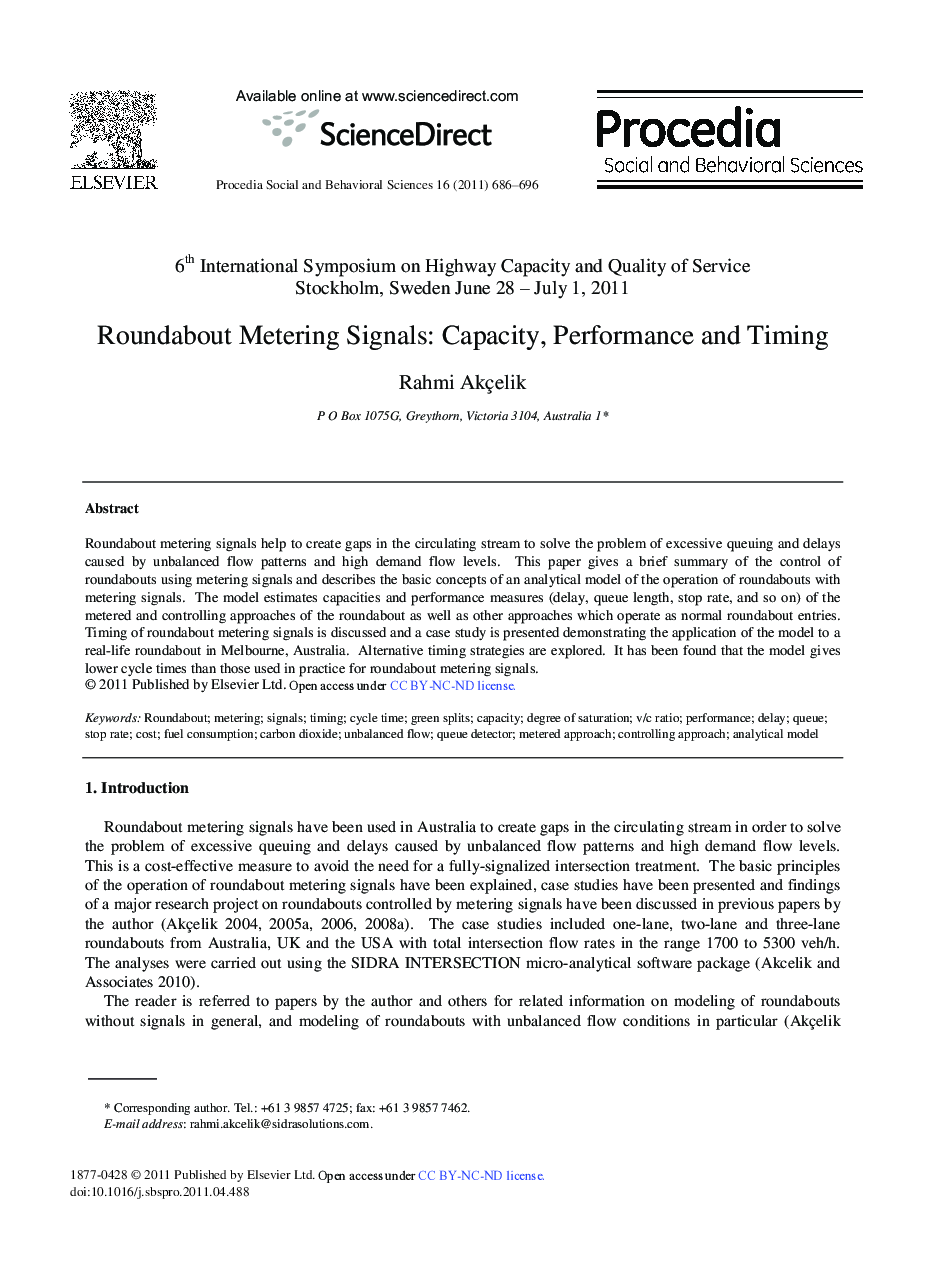| Article ID | Journal | Published Year | Pages | File Type |
|---|---|---|---|---|
| 1124199 | Procedia - Social and Behavioral Sciences | 2011 | 11 Pages |
Roundabout metering signals help to create gaps in the circulating stream to solve the problem of excessive queuing and delays caused by unbalanced flow patterns and high demand flow levels. This paper gives a brief summary of the control of roundabouts using metering signals and describes the basic concepts of an analytical model of the operation of roundabouts with metering signals. The model estimates capacities and performance measures (delay, queue length, stop rate, and so on) of the metered and controlling approaches of the roundabout as well as other approaches which operate as normal roundabout entries. Timing of roundabout metering signals is discussed and a case study is presented demonstrating the application of the model to a real-life roundabout in Melbourne, Australia. Alternative timing strategies are explored. It has been found that the model gives lower cycle times than those used in practice for roundabout metering signals. © 2011 Published by Elsevier Ltd.
